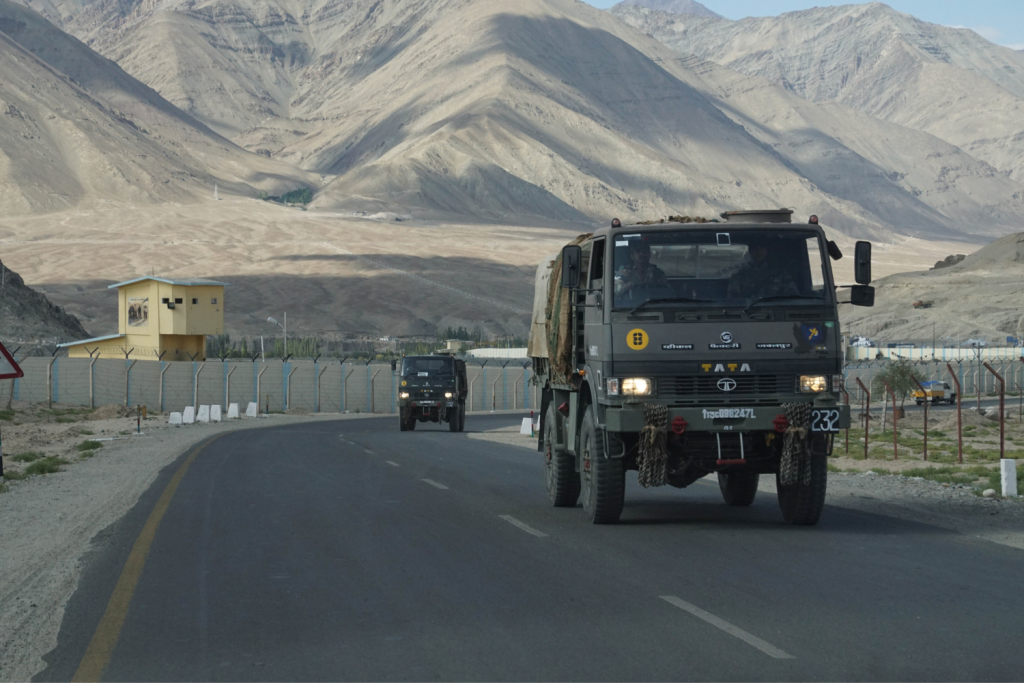In a strategic shift, India is turning a new leaf by promoting the domestic defence industry to meet not only its own requirements but also to its aspiration of export. The defence production and its export numbers point to the new found zeal
India’s defence sector is witnessing a metamorphosis like never before with a strong government push towards indigenisation, or an Atmanirbhar Bharat, and the involvement of the private sector is giving it a fresh impetus.
While the defence forces are inducting many state-of-the art systems through top-notch defence purchases, simultaneously the thrust is also to the domestic manufacturing.
India’s defence production reached Rs. 1.10 lakh crore, which was Rs. 40,000 crore in 2014; a near three-fold growth. The defence exports have now reached Rs. 16,000 crore from Rs. 1,000 crore nearly a decade ago. In the preceding year, it was around Rs 3,000 crore. The journey from Rs 1,000 crore to Rs 3,000 crore was long and arduous but the leap to Rs 16,000 crore was breadth taking.
The journey is witnessing fresh beginning and the country has already set an ambitious target of achieving Rs 50,000 crore by 2028-29.
At the policy level in past few years several reforms have been introduced, including priority given to procurement of capital items from domestic sources under Defence Acquisition Procedure (DAP)-2020. The government has notified four ‘Positive Indigenisation Lists’ of total 411 items of Services and three ‘Positive Indigenization Lists’ of total 3,738 items of Defence Public Sector Undertakings (DPSUs), for which there would be an embargo on the import beyond the timelines indicated against them. The government has also simplified processes to obtain industrial licenses with longer validity period along with the liberalisation of Foreign Direct Investment (FDI) policy.
Defence Industry as a sector was opened up in May 2001 for up to 100 per cent for Indian private sector participation and according to government as on April 2023, a total of 606 Industrial Licenses have been issued to 369 companies operating in the defence sector.
Bringing MSMEs into the picture is hitting two birds with one stone — expanding the sector and also supporting the smaller players. The government has also established two Defence Industrial Corridors, one each in Uttar Pradesh and Tamil Nadu. There are countless other initiatives to give the much-needed push to the sector.
Expanding its Wings
India is also strategically expanding its wings to other countries to exhibit its capability heft. Take for instance, it is gradually increasing its footprints in Nigeria. Traditionally, African continent has been a bastion of Chinese and Russian warfare exports. With the Indian entry, the dynamics is expected to change.
India is aiming for a significant bite in arms trade with the country and an Indian delegation went on a diplomatic mission to capital Abuja. Representatives of the government and private companies including those from HAL, Bharat Electronics, Bharat Earth Movers (BEML), Mazagaon Dock Shipbuilders and Larsen & Toubro (L&T) were part of this delegation.
There is a considerable interest in country’s light combat aircraft (LCA) Tejas in the international market. Moreover, Hindustan Aeronautics Limited’s (HAL) light combat helicopter ‘Prachand’ has already been inducted and the Indian Air Force and Army will likely be buying over 100 such machines to man India and China borders, going ahead.
The BrahMos missiles deal with the Philippines and the USD 250-million arms deal with Armenia are some other important steps towards putting Indian products in the international market.
Not to mention that the orders by Indian armed forces from local units is only going up. This is a strategic advantage for India and removes reliance over foreign companies. It will also prevent exodus of foreign exchange supporting the Indian economy. But more importantly it will help Indian defence companies to grow and innovate and become a bedrock for meeting its defence requirements.
While industry catering to conventional warfare is seeing a turnaround, private sector participation in the area of defence and aerospace is also gaining its foothold.
Defence Tie-ups
By virtue of being the largest arms importer, India espouses a lot of interest from global exporters. Many big players are now scrambling for a piece of the pie. Multiple media reports suggest how foreign companies are looking to forge tie-ups with the Indian companies to set-up units in India. French Thales has ambitious plans to develop and manufacture defence weapon system in India and is looking for partners, one report said while American drone maker Skydio recently partnered with Aeroarc.
The sector is replete with many more examples like Airbus’ tie-up with Tata Advanced Systems or Swedish company Saab’s plans to manufacture rocket in India.
India is the fifth largest economy and is aspiring to become the third largest in the next few years, and eventually becoming a developed nation by 2047. For it to achieve this goal, it will have to secure its energy and security needs. The road is long but it is steadily and swiftly moving towards it.

